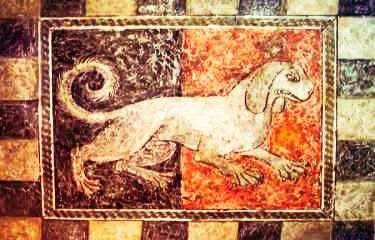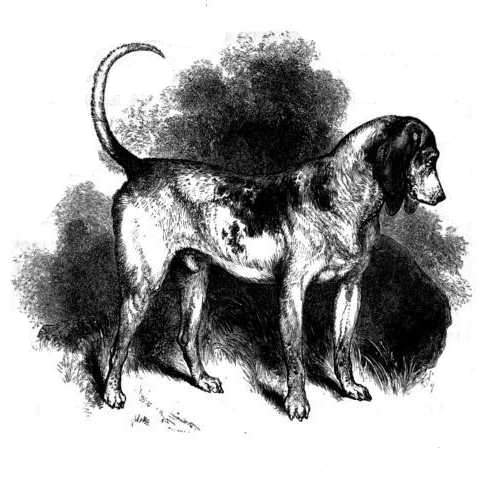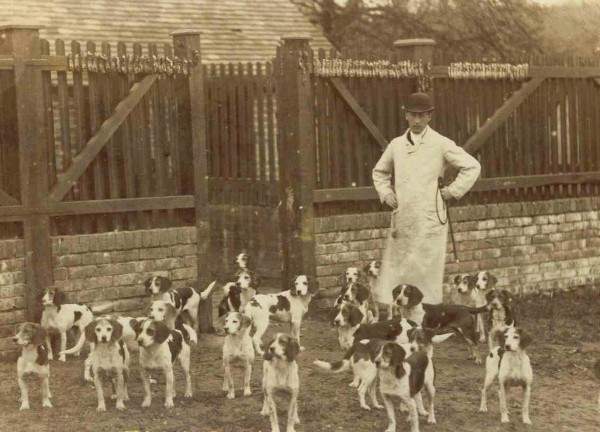The origin of the beagle
The beagle is a smaller scent hound, similar to the much larger English foxhound. The breed was developed mainly for hunting hares, as known also as beagling. The beagle has a great sense of smell and amazing tracking abilities. The beagle is smart, joyful and still a healthy breed nowadays. But start from the beginning.
To begin, we have to go right back in Ancient Greece. Dogs of similar size and hunting purpose to the modern beagle can be traced back to the 5th century.
In the 8th century there existed a breed called the St. Hubert Hound, which was a scent hound. From this St. Hubert Hound, a newer breed was created: the Talbot Hound. The Talbot had a mostly white coat and a very deep bark. Its one feature that did not serve well for hunting, was that this dog was a rather slow runner.
Arrival to Britain
From medieval times, the term Beagle was used as a generic description for smaller hounds, though these dogs differed very much from the modern breed. Miniature breeds of Beagle-type dogs were known from the times of Edward II and Henry VII, who both had packs of Glove Beagles, as they were called since they were small enough to fit on a glove, and Queen Elizabeth I kept a breed known as a Pocket Beagle, which stood 8 to 9 inches (20 to 23 cm) at the shoulder. Small enough to fit in a "pocket" or saddlebag, they rode along on the hunt.
Once larger dogs found the prey, these little dogs were let loose to continue the chase through thick brush; a place where the larger dogs could not easily get through.
Elizabeth I referred to the dogs as her singing Beagles and often entertained guests at her royal table by letting her Pocket Beagles cavort amid their plates and cups.
This small Pocket Beagle became extinct by about the 1900s. All genetic lines are no longer in existence. Those who nowadays describe their beaglelike dogs as pocket beagles are simply scammer!
By the 18th century, two breeds had been developed for hunting hare and rabbit: the Southern Hound & the Northern Hound (also known as the North Country Beagle).The Southern Hound was a tall, heavy dog with a square head, and long, soft ears, was common from south of the River Tent, probably related to the Talbot Hound. Even though they were slow, it had stamina and an excellent scenting instinct. The North Country Beagle was possibly a cross between an offshoot of the Talbot stock and a Greyhound, was bred in Yorkshire and was common in the northern counties. It was smaller than the Southern Hound, less heavy-set, and with a more pointed muzzle. It was faster ,but its scenting abilities were less well-developed.
Reverend Phillip Honeywood established a beagle pack in Essex in the 1830s we believe, his pack formed the basis for the modern beagle. Although details of the pack's lineage are not recorded, it is thought that North Country Beagles and Southern Hounds were strongly represented. The first new Beagle that was still different than today’s Beagle; they were smaller (about 10 inches - 25cm) and had a pure white coat.
The countryside began to change in the 18th century as land gradually turned to cultivation. In the early 1800s the numbers of Beagle packs went into steep decline and by 1850 there seems to have only been about a dozen known packs in existence. The Beagle itself had to change and the improvements were undertaken to avoid the extinction by a few knowledgeable people so that by the early 20th century there were over 50 packs registered with the Master of Harriers and Beagles Association. The Beagle Club itself was formed in 1890.
The early history of the show Beagle is closely shared with pack hounds. Show and working hounds were at one time one and the same, as the better looking pack Beagles were, in fact, those seen in the ring. The split between the show and working types scarcely existed, and certainly it is not the wide gulf that nowadays exists in the UK. The beagle is however much more a show and hunting dog at the same time in the most parts of Europe. We hope to keep our breed as a "complete package" for long.
The Kennel Club registered show Beagle began to flourish after the Second World War in the UK. All the Beagles shown at this time were bred by packs.
1958 was also an important year for the breed as the first American imports to the UK were released from quarantine. These smaller hounds helped to rejuvenate the breed following the ravages of the war. As well as Barvae, other kennel name such as Appeline, East Nene, Derawuda, Rozavel, quickly followed by Dialynne, Rossut, Crestamere, Southcourt, Korwin and many more, all contributing to the improvement of the show Beagle and thereby the breed in general.
In 1972 the first beagle was registered in Austria as well. The Austrian Beagle Club was formed 4 years later and still today it is the first contact point concerning any questions about our formidable breed.
the Beagle
fit for purpose: a merry hound whose essential function is to hunt, primarily hare, by following a scent. Bold, with great activity, stamina and determination. Alert, intelligent and of even temperament.



